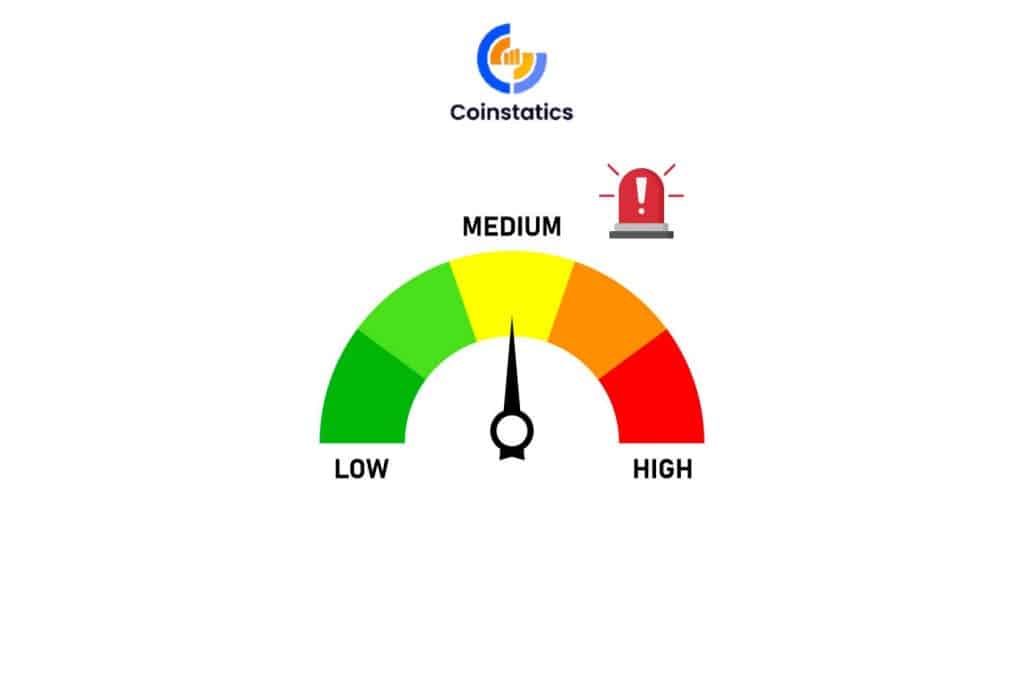This article was last updated on January 12, 2023
Risk management is an important part of every trading market. The forex market is no exception. Many people start trading, get lucky, and make a lot of money, but then lose it, because of a lack of risk management. This is why we want to dedicate a whole guide to the basics of forex risk management, especially targeted toward beginners. However, this doesn’t mean that there won’t be useful information for experienced traders as well.
We will go over everything that we believe is important, which includes risk management fundamentals, and more. Without further ado, let’s get right into it.
Table of Contents
Basics Of Risk Management Strategies For Forex Trading Beginners
Trading in the foreign currency (forex) market requires careful attention to forex risk management. Because of how quickly exchange rates can change and how unpredictable the market is, traders must be able to efficiently manage their risk. Setting stop-loss orders is one of the most crucial ideas in forex risk management. When the market swings in a bad direction, a stop-loss order is a type of order that automatically closes a deal. This enables traders to appropriately control their risk and reduces the possible loss on a trade.
Position sizing is a key idea in the management of FX risk. Position size is the process of figuring out how many lots or units to trade according to the amount of money that is at stake. This makes it less likely that a single trade will use up a large percentage of the trading money and put the trader in danger of going bankrupt.
RELATED: How To Trade Forex With $100 – The Easiest Guide
Furthermore, it’s critical to understand the risk-reward ratio. It is a technique for weighing possible trade returns against the risks. Trading professionals may efficiently control their risk by choosing which trades to enter and exit by being aware of the risk-reward ratio. Variety is crucial. Spreading the risk and reducing the effect of any single trade on the whole portfolio can both be accomplished by diversifying the portfolio among various currencies and assets. It enables investors to diversify their holdings and spread out their capital.
Summary
It’s critical to keep up with any political and economic changes that can have an impact on the foreign exchange market. As a result, traders may be better able to predict market changes and decide when to enter and quit trades. Finally, keep a positive outlook and avoid overreacting to temporary market changes. Composure is a skill in the field of trading. And risk management is the most valuable skill for beginners in the forex market.
Understanding Risk Management In Forex Trading For Beginners
There are a number of additional techniques for traders to control their risk in the forex market, in addition to the previously described risk management strategies. To help traders establish stop-loss orders and take-profit levels, one strategy is to employ technical analysis to pinpoint important market support and resistance levels. Another strategy is to employ fundamental analysis to comprehend the underlying political and economic forces that influence currency fluctuations and to use that knowledge to make more intelligent trades.
Risk management in forex trading includes money management as a key component. This entails defining specific objectives for each trade, selecting the right position size based on the amount of capital at risk, and monitoring the portfolio’s performance on a regular basis. This will assist traders in limiting their exposure to risk and avoiding excessive leverage in their deals.
Risk-adjusted performance measurement, which enables traders to evaluate the risk-adjusted return of a trade by taking into account both the potential return and the potential risk, is another way to reduce risk. This will make it easier for traders to decide which trades to engage and exit as well as the expected return for a particular degree of risk.
Additionally, it’s crucial to keep a trading notebook where you can document your transactions, the justification for your entry and leave, your feelings as you make the deal, and any other pertinent details. This routine can assist traders in spotting patterns in their trading behavior and modifying their strategy as necessary.
SIMILAR READ: Forex Vs Stocks – Which Is More Profitable And Why?
In conclusion, minimizing risk is essential for long-term success in the forex market. Beginners traders can reduce risk and increase returns by putting into practice good risk management tactics, including as placing stop-loss orders, diversifying the portfolio, keeping an eye on leverage levels, and frequently analyzing performance in the forex market.
Creating Risk Management Policies
Guidelines for position sizing and money management must be part of the risk management policy. This entails figuring out the right position size based on the amount of money at risk and modifying the size as necessary to keep within the risk tolerance criteria. It should also contain instructions for determining take-profit levels, profit objectives, and stop-loss orders.
The procedures to be performed when a trade goes against the trader should also be specified in the risk management policy. This entails deciding on an acceptable loss threshold and acting to close the trade or modify the stop-loss order if the deal reaches that threshold. The policy should also specify how losses should be recovered, including by modifying position size, reviewing trade techniques, and taking a sabbatical from trading.
Monitoring the performance of the portfolio on a regular basis is another critical component of a risk management strategy. This involves monitoring the overall performance of the portfolio as well as the profit and loss on each deal. In order to maximize returns while lowering risk, it also entails evaluating the risk-adjusted return of each transaction and modifying the approach as necessary.
A risk management policy can be as a living document that should be regularly evaluated and modified especially for beginners in the forex market. The policy should be adjusted to reflect changes in market conditions.
Using Stop-Loss Orders
You can use a preset cash amount or a percentage of the account’s equity to set stop-loss orders, among other options. A trader might, for instance, put a stop-loss order at $100 or, if that amount is lower, 2% of the account’s equity. While stop-loss orders can aid in limiting losses, it is crucial to remember that there is always a chance of slippage in fast-moving markets, therefore they cannot guarantee against losses.
Using trailing stop-loss orders is yet another method for risk management. When a trader uses a trailing stop-loss order, the stop-loss level is automatically adjusted as the market swings in the trader’s favor. The stop-loss order will move up to 1.2950 if the market moves up to 1.3050, for instance, if a trader buys a currency pair at 1.3000 and places a trailing stop-loss at 50 pips. By doing this, traders may protect their gains while the market is moving in their favor and avoid losing money if it does the opposite.
Another approach is to use a volatility-based stop-loss, which modifies the stop-loss level in response to market volatility. In turbulent markets where prices can change dramatically in a short amount of time, this strategy may be advantageous.
It’s also crucial to remember that stop-loss orders should be positioned strategically, according to the analysis of the trader and the circumstances of the market at the time. Stop loss orders should not be placed too closely to the market price as this increases the danger of slippage, or too far away as this will not offer enough protection in the event that the transaction goes against the trader.
Implementing Position Sizing
Utilizing a predetermined percentage of the trading capital is one typical approach of calculating position size. A trader might opt, for instance, to risk no more than 2% of their capital on a single transaction. By dividing the trading capital by the predetermined fraction, a trader can use this strategy to determine the proper position size for any trade.
Utilizing position sizing depending on volatility is another strategy. This strategy changes the position size in accordance with the volatility of the currency pair being traded. When trading a highly volatile currency pair, for instance, a trader can choose to open a smaller position because the likelihood of large price swings raises the risk of the deal.
Another key thing to consider when determining position size is the risk-reward ratio. Investors should weigh the potential risk and return of a trade before deciding how big of a position to take. The possible return is three times greater than the potential loss, for instance, in a deal with a risk-reward ratio of 1:3. Traders might take a bigger position size in this scenario.
Leverage should be taken into account while determining position size. Although it raises the possibility of losses, leverage enables traders to manage huge holdings with a relatively modest amount of cash. When employing leverage, traders should exercise caution and make sure that the position size does not exceed their available capital.
Finally, it is critical for traders to routinely analyze and keep an eye on the performance of their entire portfolio. Traders should modify the size of their positions when market conditions change to make sure that they remain consistent with their overall risk management plan and their degree of risk tolerance.
Using a Risk-to-Reward Ratio
Establishing an adequate risk-to-reward ratio is a crucial component of managing forex risk because it enables traders to make well-informed decisions regarding when to enter and exit trades. A higher risk-to-reward ratio typically indicates that there is a bigger chance of profit than of loss, which can make the deal more alluring. On the other hand, a smaller risk-to-reward ratio can mean that the possible loss is larger than the potential gain, which could make the trade less appealing.
It’s crucial to keep in mind that both a high risk-to-reward ratio and a low risk-to-reward ratio don’t always indicate that a transaction is good. Along with risk-reward ratio, several other elements should be taken into account, including market conditions, technical and fundamental research, trading techniques, and risk management measures.
INTERESTING ARTICLE: Forex Scalping Strategies For Beginners
Traders should take into account the risk-to-reward ratio at several levels, such as the stop-loss level and the take-profit level, in addition to calculating the ratio for the entire trade. In addition to making sure that the stop-loss level is acceptable in light of the market conditions, a trader should attempt to set stop-loss orders at a level where the risk-to-reward ratio is advantageous. The risk-to-reward ratio should be favorable for setting take-profit levels as well.
Conclusion
In conclusion, there are dangers associated with forex trading, but traders may decrease their exposure and increase their returns by comprehending and putting into practice good risk management tactics. Having a solid understanding of fundamental ideas like stop-loss orders, position sizing, money management, risk-reward ratio, and diversification can help traders safeguard their capital and keep their portfolios stable.
Additionally, traders can stay educated and make wise selections by routinely reviewing performance and following political and economic trends. A well-considered risk management policy that is periodically evaluated acts as a guiding principle to keep traders on course. Traders may handle the volatile forex market with greater assurance by keeping these ideas in mind, making it a crucial step on their road to success.
Finally, make sure you have a good risk management strategy in the forex market, especially as a beginner, before you start trading.





